Discover 11 hidden attractions, cool sights, and unusual things to do in Lüneburg (Germany). Don't miss out on these must-see attractions: St. John's Church, Lüneburg Water Tower, and St. Michaelis. Also, be sure to include Kalkberg in your itinerary.
Below, you can find the list of the most amazing places you should visit in Lüneburg (Lower Saxony).
Table of Contents
St. John's Church
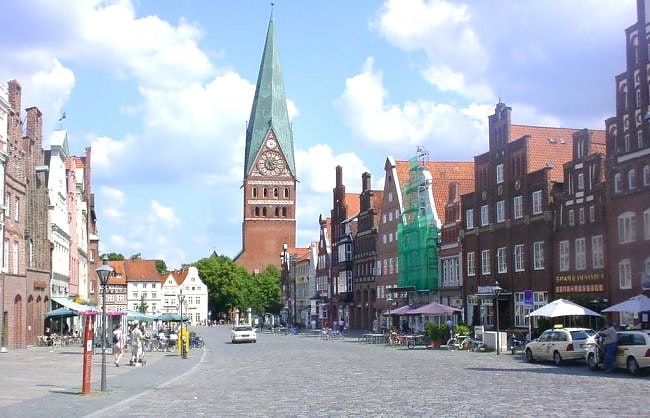
Also known as: St. Johannis
Evangelical church in Lüneburg, Germany. The Church of John the Baptist is the oldest Lutheran church in Lüneburg, Germany. It is located in the city centre. Lüneburg is on the European Route of Brick Gothic and the church is an example of this style.[1]
Address: Bei der St.Johanniskirche 2, 21335 Lüneburg
Lüneburg Water Tower
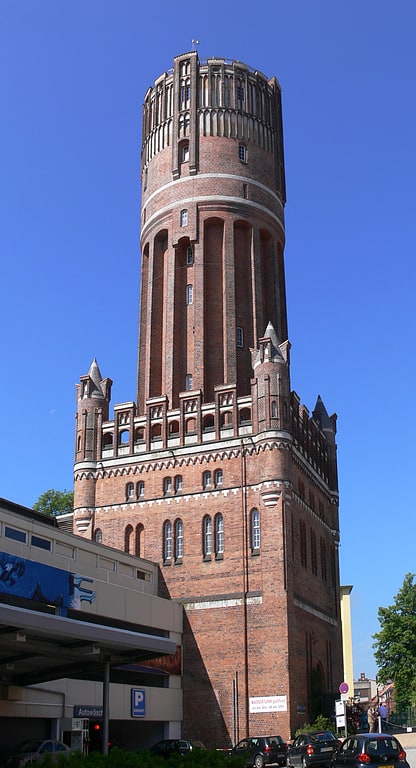
Also known as: Wasserturm Lüneburg
Water tower with tours and exhibitions. Lüneburg Water Tower is a water tower in the southeastern part of the Lüneburg old town in Lower Saxony, Germany, built by the architect Franz Krüger, from designs by Richard Kampf. Its erection was initiated on 3 October 1905, and the tower was taken into use in November 1907. The water tower is 55 metres tall, and is the tallest building in the Lüneburg old town that is not a church. It stands between the considerably newer Nordlandhalle and the Johanneum, the latter now used as a school. The tower consists of a square base of 18 metres and a round portion which is walled up around a 500 cubic metres large water tank. The upper part is carried by 16 solid columns.[2]
Address: Am Wasserturm 15, 21335 Lüneburg
St. Michaelis
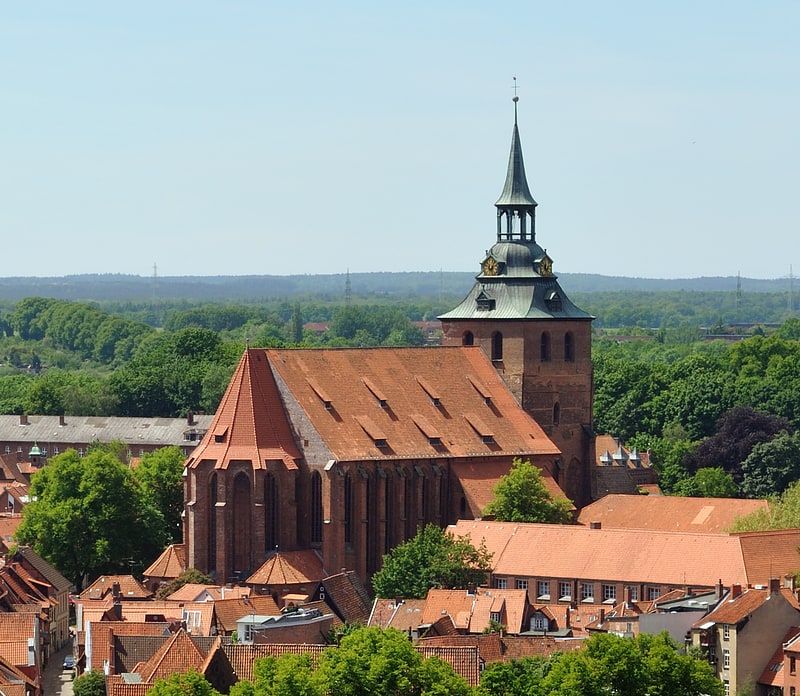
Evangelical church in Lüneburg, Germany. St. Michaelis is one of the main churches in Lüneburg, Lower Saxony, Germany. It was first an abbey church of the former monastery of Benedictines, built from 1376 in brick Gothic style. It became Lutheran during the Reformation. Johann Sebastian Bach was for two years a pupil at the school of St. Michaelis.[3]
Address: Auf dem Michaeliskloster 2b, 21335 Lüneburg
Kalkberg

The Lüneburg Kalkberg is the cap rock of a salt dome in the western part of the German town of Lüneburg. The Kalkberg was a gypsum mine during the middle ages, but is today a Naturschutzgebiet and a common meeting place for city residents.[4]
Lüne Abbey
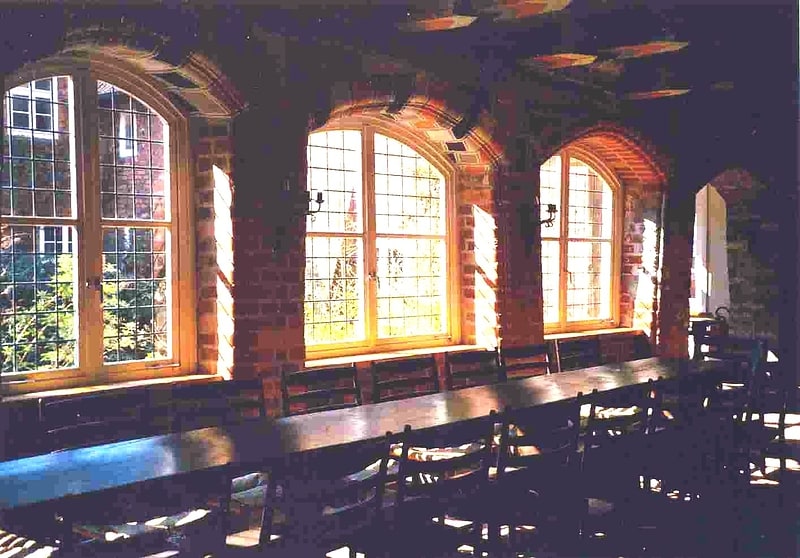
Also known as: Kloster Lüne
Abbey. Lüne Abbey is a former Benedictine nunnery in the Lower Saxon town of Lüneburg. Today it is a Protestant Lutheran convent and is managed by the Klosterkammer Hannover. The current abbess is Reinhild Freifrau von der Goltz.
Founded in 1172, the convent soon established itself as a wealthy and autonomous local power in the Lüneburg Heath region. It recruited its nuns mostly from the influential patrician families of Lüneburg and accommodated up to 60 women over most of its existence. These women would be thoroughly educated in Latin, Liberal Arts and in Christian doctrine and liturgy. Over the course of the 15th and 16th centuries, the convent structure changed first through the monastic reform (1481), then through the Protestant Reformation but was never resolved.[5]
Address: Lüner Kirchweg 1, 21337 Lüneburg
German Salt Museum
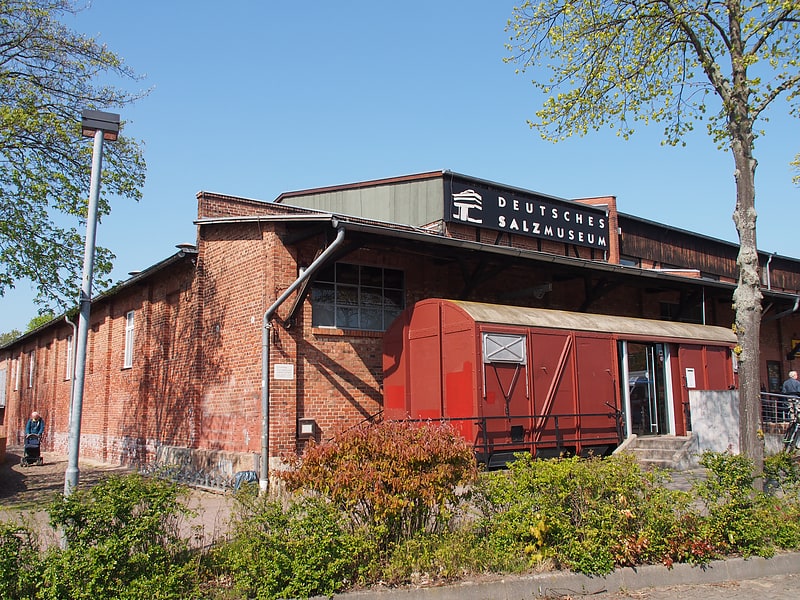
Also known as: Deutsches Salzmuseum
Museum in Lüneburg, Germany. The German Salt Museum in the German town of Lüneburg, on the site of the old production facilities of the Lüneburg Saltworks when it was closed in 1980. In 1991, it won the Council of Europe Museum Prize.
This industrial memorial which is based in the boiling house built in 1924 is one of the earliest of its type. It recalls the history of the oldest and, at one time, the greatest industrial operation in central Europe.
The museum is divided into four exhibition areas:
- Salt in general (Salz allgemein)
- 20th century (20. Jahrhundert)
- 19th century (19. Jahrhundert)
- Middle Ages and Early modern period (Mittelalter and frühe Neuzeit)
During the summer demonstrations take place in a replica of part of a medieval boiling hut are available on request. Members of the salt museum staff, dressed in historical costume, demonstrate the salt-boiling process using lead salt pans heated on wood fires.[6]
Address: Suelfmeisterstr. 1, 21335 Lüneburg
Ostpreußisches Landesmuseum
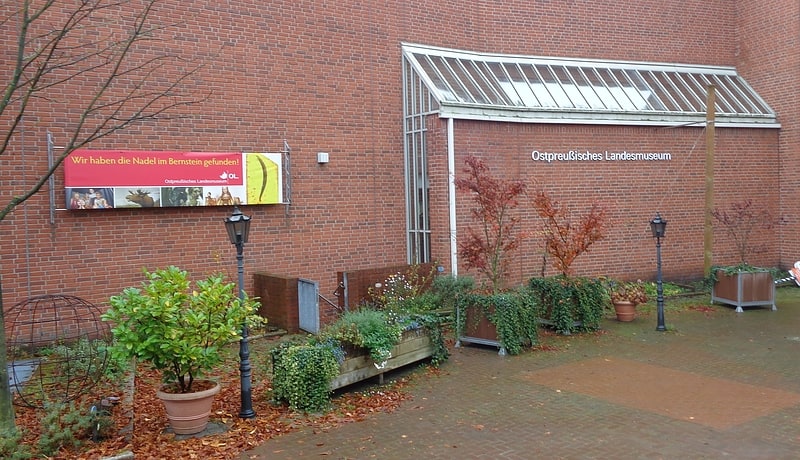
Museum in Lüneburg, Germany. The East Prussian Regional Museum in Lüneburg, Lower Saxony in Germany, was established 1987 on the basis of the East Prussian Hunting Museum created by forester Hans Loeffke. It documents and commemorates the history, art and culture, but also the landscape and fauna of the former German province of East Prussia. Since spring 2009 the director of the museum is historian Dr. Joachim Mähnert.[7]
Address: Heiligengeiststr. 38, 21335 Lüneburg
St. Nicolai

Place of worship in Lüneburg, Germany. St. Nicolai is a church and Lutheran parish in Lüneburg, Lower Saxony, Germany. It is one of three main churches in the town, all built in brick Gothic style. The church, dedicated to St. Nicholas, is a basilica with three naves, built from 1407 to 1440. It features a "star" rib vault that is unique in Northern Germany. When the Reformation was introduced in Lüneburg in 1530, the church became Lutheran. The high steeple was added in the 19th century.[8]
Address: Lüner Str. 15, 21335 Lüneburg
Am Sande
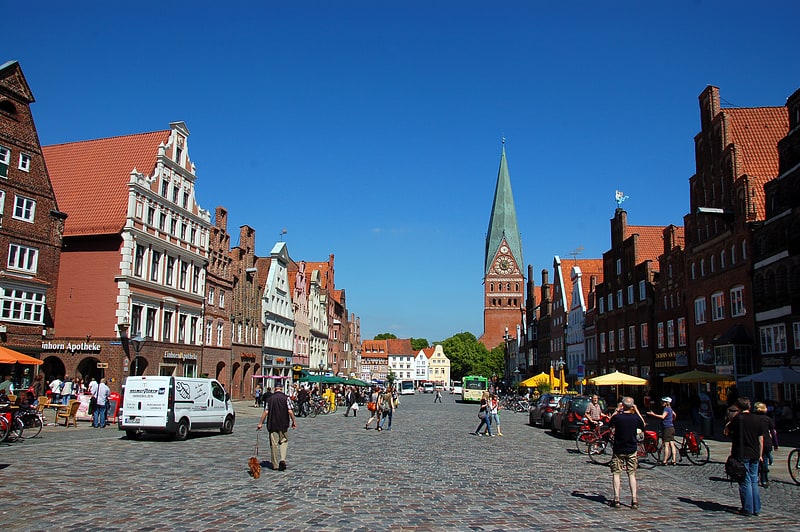
Am Sande square is located in the city center of Lüneburg. It is surrounded by predominantly medieval town houses with their Gothic stepped and curved Baroque scroll gables. The source of the IDs and the descriptions is the Denkmalatlas Niedersachsen. The status of the list is December 19, 2021.
Museum Lüneburg
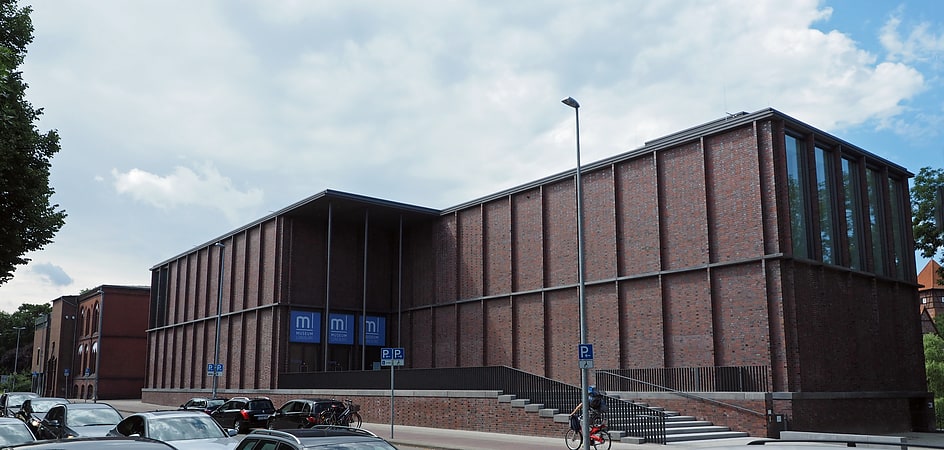
The Museum Lüneburg deals with the cultural landscape of the Hanseatic city of Lüneburg in Lower Saxony and its surroundings. Exhibits of natural history, cultural history and archaeology are presented. The collection focuses on the 15th and 16th centuries.
Old Town Hall
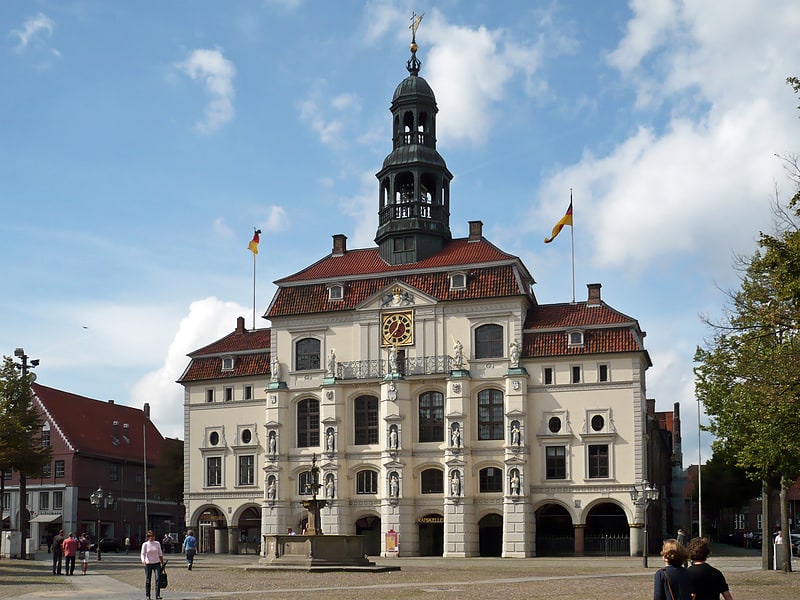
Also known as: Altes Rathaus
Lüneburg City Hall is an example of medieval and early modern secular architecture in northern Germany. It was built around 1230, was repeatedly expanded over the centuries and is still the headquarters of the council and administration of the Hanseatic city of Lüneburg.
The Lüneburg town hall complex is enclosed by the streets Am Markt (east), Waagestraße (south), Am Marienplatz (west) and Am Ochsenmarkt (north). With a floor area of 5000 m² and 259 rooms, it is considered the largest medieval town hall in northern Germany. During guided tours, the historically most valuable parts (Court Arbour, Prince's Hall, Mayor's Chamber, Old Archive and Chancellery, Great Council Chamber) can be visited.